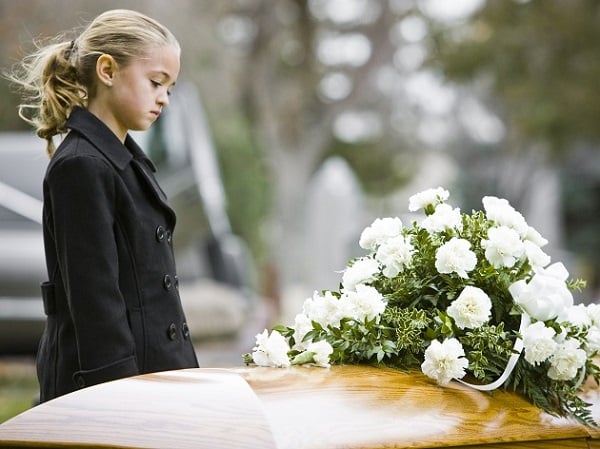Events which lend themselves to explaining death to children
18 March 2017[Previous post: http://bit.ly/2n5qFfF]
If children are brought to hospitals and old people’s homes under circumstances in which they’re comfortable, this allows them to become acquainted with sickness and bodily decline as a natural part of life, which makes it easier to link death to biological causes. Moreover, if children go to a cemetery with a relative whose intention is to look after a family grave, this is an opportunity to explain things to the children. Placing flowers, lighting an oil-lamp or candle for praying, or communicating with the person departed are experiences which teach children directly and allow questions to surface regarding, for example, the manner of burial, life after death, and communication with the departed. In general visits to cemeteries provide children with the opportunity to acquaint themselves with the place and to develop a personal way of dealing with a graveyard.

Also beneficial to children’s understanding of death is their partial or complete participation in funeral services. This possibility needs to be examined on an individual basis, depending on the personal wishes, age, personality and stage of maturity of each child. With this in mind, the funeral service the child is to attend will be chosen, and will preferably be those where extreme behaviour isn’t expected. Children’s attendance at funerals of people to whom they’re not related or at least directly connected to, protects them emotionally and, at the same time, allows them to reconstruct death within their own framework, thus rejecting any mistaken, imaginary images they may well have formed.
Grown-ups have a duty to prepare children, by telling them what’s going on and explaining the order of service for a funeral. Children should be prepared for what they will hear and see: the coffin, the corpse, the petitions to God on behalf of the departed person, the manner of burial and the likely tears of friends and relations. It’s important to explain to children that at such events, people express their distress in a variety of ways and that many of them cry. During the course of the funeral and after it’s finished, grown-ups should be ready to explain to the child any query which might arise.
Both attendance at hospitals and old people’s homes on the part of children and their participation in funeral services can also help in their gradual emotional development and the process of maturity. For psychiatry and psychology, this is achieved when people are given opportunities to progress from narcissism to the gradual development of the capacity for altruistic love, that is the ability to overcome their narcissistic fixation with themselves and to be able to share the pain of others and empathize with them. In terms of Orthodox spirituality, this progression might be considered the transition from the state of the fall (narcissism) to that of glorification (emptying of the ego). So when children learn about human pain in circumstances which are appropriate for them to do so, and when they have the chance to empathize with others, they’re not crushed spiritually, but instead are given the opportunity to grow and develop emotionally and spiritually.
Events which lend themselves to an explanation of death, the condition of the deceased and the relationship we retain with them are also, of course, provided in the liturgical life of the Church. In particular, the Saturdays of All Souls, Great Week, the commemoration of the saints and the memorial services are all important opportunities.






